#saltmarsh plants
Explore tagged Tumblr posts
Text
The article explores the best saltmarsh plants for local habitats, highlighting a visit to Newport Lakes Native Nursery. It provides insights into native plant species that thrive in saltmarsh environments, emphasizing their ecological benefits. The visit to the nursery offers a hands-on experience in discovering these plants, contributing to local conservation efforts.
0 notes
Text

Kosteletzkya pentacarpos / Saltmarsh Mallow at the Sarah P. Duke Gardens at Duke University in Durham, NC
#Kosteletzkya pentacarpos#Kosteletzkya#malvaceae#Saltmarsh Mallow#Mallow#Native plants#Native flowers#Wildflowers#Plants#Flowers#Nature photography#photography#photographers on tumblr#Sarah P. Duke Gardens#Duke Gardens#Duke University#Durham#Durham NC#North Carolina#🌺🌻
3 notes
·
View notes
Text
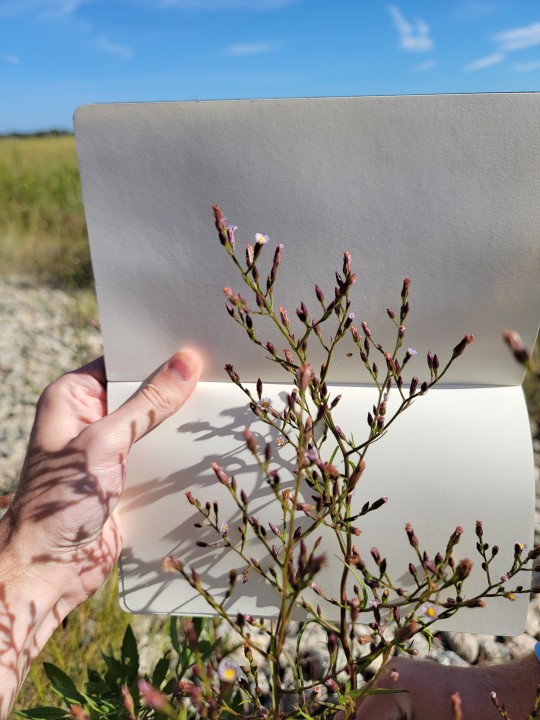

Annual Saltmarsh Aster - Symphyotrichum sebulatum
Found in mid September on a decaying roadside within a wide swath of spartina salt marsh is this small species of aster.
Like all asters, the petals are purple rays which lead to a collection of small yellow disc flowers in the center where pollen is found. This flower is an herbaceous annual (only lives one growing season) and can grow about 3 feet high. They can be seen flowering purple in autumn and may be rather difficult to find amoung other larger high marsh species.
In terms of ecology, it's common to find monarch butterflies present near these flowers on their return migration south. Asters typically provide local pollinators with late meals before winter. We only spotted one butterfly in the marsh this year, which was not ideal...
This species occupies a high marsh habitat niche, usually these are areas subject to tidal flows only twice a day. In disturbed open ground this species can often fill in small patches, occasionally it can also be found growing on highways due to high salt concentrations. This aster is native to saline coastal environments from Texas to New England (for some reason wikipedia claims this species is native to the Pacific coast and Californian deserts, this is almost certainly incorrect and contradicts their own source). In some northern states such as Maine and New York, the annual Saltmarsh Aster is apparently becoming somewhat rare in those native ranges due to development and sea level rise.
Next time you're in a coastal salt marsh and can stomach the smell, look around for these cute charismatic flowers.
#plant profiles#eastern North American native plants#salt marsh flora#annual saltmarsh aster#Symphyotrichum sebulatum
9 notes
·
View notes
Text
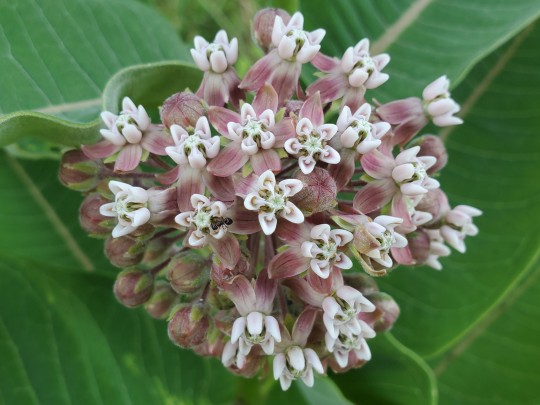


Common Milkweed, Asclepias syriaca
9 notes
·
View notes
Text

Saltmarsh Fleabane (Pluchea odorata)
Taken at Gleason Park in Indian Harbour Beach, FL
#saltmarsh fleabane#flower#flowers#flower photography#plant#plants#plant photography#nature photography#photography#florida#florida photographer#florida photography#Gleason park#nikon photography#nikond3500
2 notes
·
View notes
Text


#new york landscape#eastchester bay#saltmarsh cordgrass#sporobolus alterniflorus#aquatic plants#algae#beach#marsh#pelham bay park#bronx
0 notes
Note
Hi. My wife referred me to you for your knowledge and enthusiasm for ecology. If I wanted my fictional fantasy world to have a saltwater river (my world is weird), how could I explain or justify that? Is it even possible, ecologically speaking? Anyway, love your posts and thank you!
I have been considering this with my colleague who is a physical geographer with a passion for riverine geomorphology and she wants to sit down with me and discuss the possibilities more fully. So I may yet update this post with more options.
But, the short answer is yes, there are options to make it possible.
The one we've best fleshed out so far basically comes down to groundwater contamination. Groundwater is contaminated with massive salt input (this would likely need to be anthropogenic - up to you whether that looks like Evil Factory Output, massive magical damage post-war, or any other consideration.) One or more of the river's main tributaries is fed primarily by this groundwater store, so it cannot flush through. Once it meets the sea, it would be brackish around the estuary anyway, but this would mean halophilic species - those tolerant of salt - would be able to spread backwards back up the river channel. Depending on what you want, for plants this could mean cordgrasses (saltmarsh formers), seagrasses along the riverbed in slower areas, or potentially long, linear stands of mangrove forest; in all of those cases, it's much more likely on a slower river than a faster one.
Now, a salt river will be far more erosional than a fresh one, so the river banks and bed would be eroding more. This means higher quantities of suspended sediment in the water, so the water colour would be murkier and browner than if it were fresh. However, if its a river with slow meanders, you might get little patches of saltmarshes establishing, where the erosion turns into deposition instead, so although the water would have a colour difference it would be extreme; on faster bits, though, it would.
There would be, either from the groundwater at the top of the catchment or along the river channel, a certain amount of salt incursion into land. This would basically make arable agriculture in those areas nigh-on impossible, but you could maybe try farming something like samphire along the banks. The exception would be areas that were away from the contaminated aquifer, that also got plenty of rainfall OR freshwater groundwater imputs from another part of the catchment. Even then, though, it couldn't go too close to the river.
Floodplains need considering, too! Floodplains only flood during wet weather events that cause the river to overtop the banks; the rest of the year, they're dry. In this case, that means you might have areas that are freshwater marshes, or maybe even normal grasslands/scrub for most of the year, which then suddenly get inundated with salt. That'll kill all those organisms quite rapidly. You wouldn't have any trees in those areas, and they'd look like mudbaths for the majority of the time, I'd imagine. Very ugly wastelands. These would then provide even more lost soil into the river, for even more browning of the water.
That much sediment would therefore mean the estuary would be a depositional one - new land forms at it. It would probably have a delta. This means lots of mudflats with lots of marine worms and other invertebrates, and consequently insane levels of wading bird diversity to feed on them (plus foodstuffs - oysters, cockles, octopus, smaller fishes, etc). Loot up Korean getbol for an idea of how impressive these things can get. Saltmarshes and/or mangrove forests, too! Depending on climate. Mangroves are a tropical species.
HOWEVER, this is just one idea we've explored so far, so I shall update you if we think of others
476 notes
·
View notes
Text
The State Birds Initiative: New Jersey (#3)
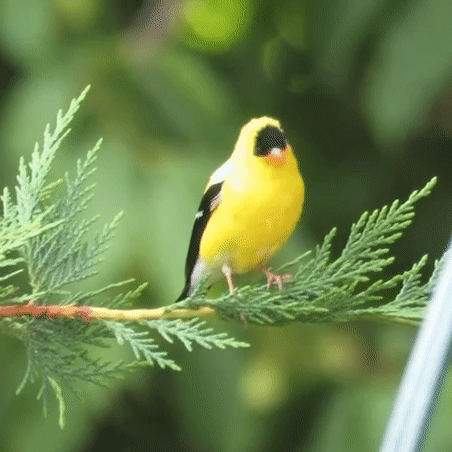
Welcome to the third official poll of the State Birds Initiative! Before the poll, though, one thing real quick. My suggestion is that you read the post below before voting in the poll below. That's especially important if you're lacking any context about the birds being presented as the new (or old) State Bird of the Garden State, New Jersey. This is to be fully informed as to why these are being presented, and to make your choices appropriately. Lastly, some of these birds, you will notice, may go against some of the rules listed in the introduction post. All is explained after the jump where the explanations are, I promise you that. But with that...OK! Here's the poll! If you'd like to see the last post, check out Pennsylvania (Poll | Results)
So, with that done...New Jersey.

OK, I'll be honest, I have very little history with New Jersey. Only been there a few times, I've driven through it a decent number of times, and I mostly know it by reputation. But, uh...for whatever reason, every trip I take that requires me to go through New Jersey, NJ is the worst driving portion of that trip. Basically every time. Maybe that's a New Jersey turnpike problem, maybe that's unhappy coincidence. Hell, maybe it's conservation bias from being a New Yorker (upstate, but I've gone to the city regularly throughout my life). Or maybe it really is cultural reputation for New Jersey trickling in to my subconscious (looking at you, Jersey Shore). But either way...I have complicated feelings about New Jersey.
But this post is NOT about my personal geographic experience. Mostly. It's about birds! So, let's get into New Jersey objectively. Third state admitted into the union, state capital is Trenton, largest city is Newark, and it's the most densely populated state in the country. Famous for being the origin of electricity in civic infrastructure, as well as the home of their favorite son, Thomas Alva Edison. Which...when you learn more about the guy, makes you wonder about New Jersey as a whole. MOVING ON! It was a major staging point in the American Revolutionary War, and ever since, it's been all about freedom. Even though you can't pump your own gas there. Although, to their credit, the Statue of Liberty is actually technically in New Jersey waters. Yeah. That's absolutely true. But, like...it's spiritually a New York landmark, so we'll let it slide.

Now, here's the thing about New Jersey, seriously and truly. It has a bad reputation because of media and New York City. This is for two more specific reasons, from what I can tell. One, the New Jersey Turnpike sucks, and it smells like raw sewage due to its proximity to industrial factories and processing plants. And unfortunate way to experience the state, and the main way I've experienced New Jersey personally. So, that's one, and it's not indicative of the state's quality. Number two is simply the fact that it's a hub for commuters, with lots of people going to either NYC or Philadelphia for work. Because of that, Jersey itself gets pieces of their cultures combined, which also makes it a very easy target with a unique accent. So, not Jersey's fault.
In reality, it's quite a nice state with more natural area than you'd expect for somewhere so densely populated. New Jerseyans, unsurprisingly love their state...and aren't big fans of tourists, from discourse I see online. It's a small state, which makes it crowded enough. Plus, there are tourist attractions there. There's the massive American Dream Meadowlands mall, there's MetLife Stadium, there's Six Flags Great Adventure, there's...Trenton. Actually, no, Trenton sucks, I stand by that assessment. But it's also a highly diverse state, with the highest proportion of Hinduism followers in the country, as well as the densest collection of LGBTQ+ social centers (AKA gayborhoods), amongst other things. NJ does deserve more credit.
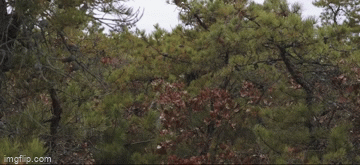
Now with that said, let's talk about the natural world of New Jersey, because there is a surprising amount to talk about. 45% of the land is covered in mixed deciduous-coniferous forest, which you've probably noticed is typical of the NE USA. Oak is our primary tree here, which is also probably why Northern Red Oak (Quercus rubra) is the state tree. It also has some major ecological features that are well known for its natural advantages. Cape May is a seaside city and vacation resort, but also one of the most well-known and important sites for birders from the United States during migration seasons, making it immediately prominent for this post. Great Swamp NWR in the north is the first wilderness area ever designated by Congress, and also serves as a major refuge for birds during the breeding season for various reasons. And maybe most importantly, the New Jersey Pine Barrens are the largest remaining pine barrens in the NE USA, and act as a bastion of diversity. More on this later, I promise; there's a species entry dedicated to this unique environment.
And that's not all to talk about here. NJ's environment needs some focus for a number of reasons, not least of which being that the state has more toxic waste dump sites than any other state in the Union, which are the focus of the federal Superfund environmental remediation program. Yeah, there's some cleanup that needs to happen in the state, especially as it is so small. Of 150 federally listed sites, only 35 have been cleaned up since the 1970s. So, yeah. We should get on that, please. But with that said, NJ has relatively low carbon dioxide emissions compared to other states, they're seventh in solar power, and get most of their electricity from natural gas and nuclear power. So, it's a greenish state that could be a lot greener.
There's a lot to talk about for such a small state, it would seem. Let's not linger about, and let's get on with the show here! I'm honestly kind of excited. Birds after the jump!!!
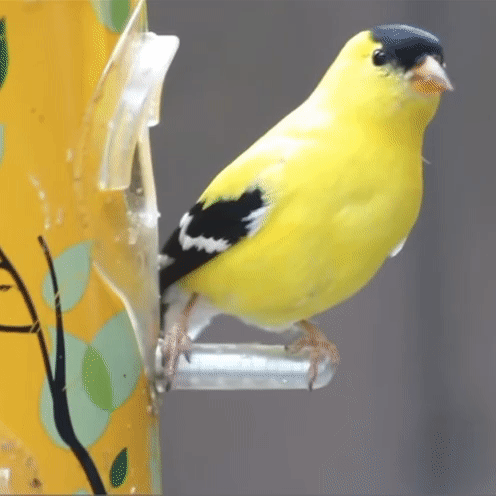
American Goldfinch (Spinus tristis)
Let's kick things off by talking about the incumbent, the American Goldfinch (Spinus tristis). Now, why was the American Goldfinch chosen as the State Bird of New Jersey in 1935? Easy answer: favoritism. The bird was nominated as the only candidate by the New Jersey Audubon Society because...it was their mascot at the time. Yeah. That's it. In reality, the New Jersey State Bird is the New Jersey Audubon Society. And even then, it's officially lost its relevancy, because that's not their mascot anymore. More on that later.
What's actually worse about the goldfinch here is...for some reason, not a lot of New Jerseyans have actually seen them. Part of the reason for this entire series, by the way is this Reddit post, which stoked the fires that had long been simmering deep within my soul. OK, not that deep, but still. Anyway, the header of that post is that the OP had barely ever seen an American Goldfinch, despite being a native. I thought that was insane (and said as much in my comments), because this is a ridiculously common bird, especially for birdwatchers. But, uh...I've looked into since then. And only 0.4% of its global breeding population resides in the state. What's crazy is, this is a common sentiment amongst New Jerseyans. They just...haven't seen this bird. And obviously, that/s not every new Jerseyan, and a lot have reported seeing it. But to be honest...is this bird really worth being called the State Bird of New Jersey?
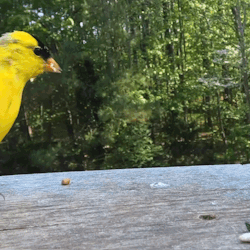
OK, can we make the American Goldfinch make sense in retrospect? Let's see, they're a highly social finch species throughout the year, living in dense colonies in the spring and summer especially. The males are late breeders with ornate flying displays meant to attract females, and may group territories with other males to defend against predators. And they're an open secondary growth forest specialist that live in the state year-round, including during the breeding season. Which means...well, actually, it means that they're perfectly suited to live in New Jersey, funnily enough.
Hear me out here. There are two things that goldfinches love most: forest clearings and weeds. New Jersey may be 45% covered in forest, but it does have deforestation as a minor problem around its settlements. However, that's not a problem for the goldfinch, who thrives in secondary growth forests that occur as a result of succession. Given an attempt in recent decades to recover New Jersey's forests, this means the goldfinch is a potential symbol of these efforts. Plus, its love of the seeds that come from flowers that are pest plants, like dandelion, thistle, ragweed, and cosmos, make it a potentially attractive bird for gardeners of the state to attract, especially as those plants thrive in open fields during stages of succession!
...YES I'M STRETCHING MORE THAN AN AUSTRALIAN BREAKDANCER WITH A DOCTORATE TRYING TO MAKE A POINT, BUT WHAT ELSE AM I SUPPOSED TO DO WITH THIS MASCOT OF AN ORGANIZATION NAMED AFTER A SLAVE-OWNER???
So...moving on.
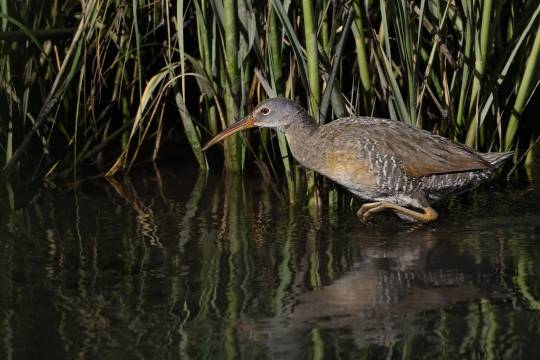
Clapper Rail (Rallus crepitans)
While the majority of natural New Jersey is covered in forest, it still has a fairly important habitat in the form of the saltmarsh. Just to get the definition in place early, a saltmarsh is essentially what it sounds like: a vegetation-dominated coastal biome with salt and brackish water, salt-tolerant grasses and plants, and the animals that depend on such. They're coastline preservers, trapping and binding sediment as it makes its way to and from the ocean, and acting as a major supply for the food web along the coasts. They're incredibly important habitats, and this will not be (and have not been) the last time you've seen them during the State Birds Initiative.
Now, obviously, these habitats are chockful of birds. New Jersey has a few major salt flats along its coast, all of which shelter some major breeding populations of birds. One of these species is the Clapper Rail (Rallus crepitans), which is our eBird-sponsored pick of this poll. Clapper Rails have 13% of their global population in New Jersey saltmarshes, meaning they're quite dependent on this unique habitat, and most of their population breeds in the state. Some people may never have seen or heard of a rail, but in case you're one of those people, just know that they're a smaller semi-aquatic relative of cranes. If you've seen a coot, moorhen, or gallinule, then you've seen a rail! And the Clapper Rail is a crustacean-eating, saltmarsh-loving, new Jersey-dependent example. And that said...it is kinda boring looking to the average person.
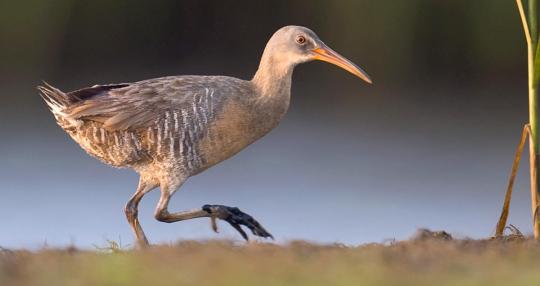
Don't take me wrong! For me, this bird is fantastic, and would actually be a lifer for me, personally. But the average non-birder? Look, in instances like this, I usually tap into the part of my brain my fiancee lives in rent-free, and all I can hear is her shouting "LONG DUCK LONG DUCK" over and over. I love these guys, but I'm not sure they'd resonate with the public. Plus, as far as saltmarshes go, these are good representatives, but I'm not sure they're the best. Are these a good New Jersey representative? Possibly, since they represent a major ecosystem in the state, and that is important. But I'll leave that question to you all. Moving on!
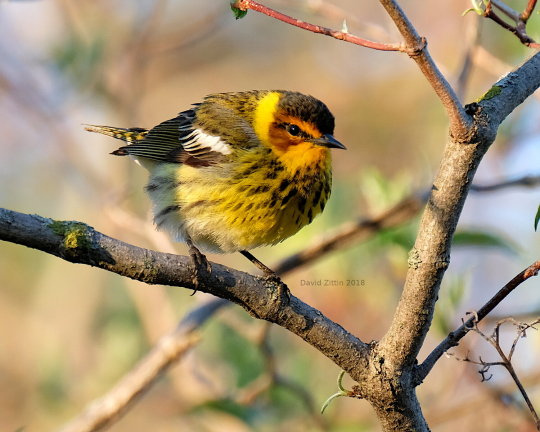
Cape May Warbler (Setophaga tigrina)
OK, onto the category of birds that are named after the state, and New Jersey has one of those! The Cape May Warbler (Setophaga tigrina) is so-named because the first specimen described by Alexander Wilson was collected in Cape May, New Jersey by George Ord. That said, it's certainly a unique warbler, easily recognizable, and dependent upon conifer forests dominated by spruce, which the Pine Barrens are...not. Still, an iconic bird in New Jersey! Except...wait, hold on...ah. It doesn't breed in the state. In fact, after it was described from a Cape May specimen, it wasn't seen in the area again for...a century. So...yeah, it's named after a major location in the state, known for birds at that, and yet it's barely found there?Love this bird, but...maybe think about renaming it one of these days.

Pine Warbler (Setophaga pinus)
Now, the Pine Warbler (Setophaga pinus), on the other hand, that's a better warbler representative of New Jersey. Well, sort of. To be fair, the Pine Warbler only has 1% of its global breeding population in New Jersey, so the state isn't a bastion or reservoir for the species. However, there is a major reservoir of the species in the New Jersey Pine Barrens, which I'd mentioned earlier. And hey, Pine Barrens, Pine Warbler...slam dunk for representation of the habitat right there. And yeah, that's absolutely relevant to the species as a whole. They live, eat, and breed in pine-dominated forests, exactly like (and including) the Pine Barrens. It's actually listed as a "Significant Congregation" species by the New Jersey Audubon Society.
And as for making a good State Bird of New Jersey? It's a notable bird, even keeping the goldfinch's yellow with white wing bars. It's not terribly difficult to find, especially during the breeding season in areas like the Pine Barrens. And hey, they're even well-known to live with other species, making them an important biodiversity indicator for conservation purposes. Plus, if people go out to look for the Pine Warbler in the wild, they'll likely encounter other species like the Blackburnian Warbler (Setophaga fusca) or the Tennessee Warbler (Leiothlypis peregrina), amongst others. Fostering interest in birdwatching by chance! It works in a conservation sense...but I don't know that it's particularly emblematic of New Jersey, to be fair.
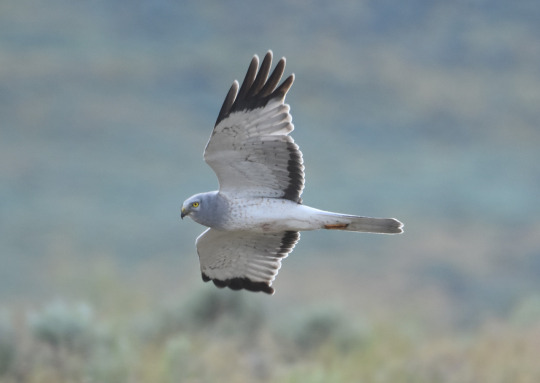
Northern Harrier (Circus hudsonicus)
Now, here's an interesting choice! If the current State Bird, the American Goldfinch, was chosen because it was the mascot for the New Jersey Audubon Society at the time, then by that logic, their current mascot should actually be the State Bird of New Jersey. And so, in that case, may I present to you the current mascot of the NJ Audubon Scoiety, and the next candidate for State Bird...the...is that a Northern Harrier (Circus hudsonicus)? Yeah, looks like it, and some sources I have confirm that's the case. But, uh...why?
Let me be really clear about something first off: I adore the Northern Harrier. Also caleld the marsh hawk, they're a beautiful raptor native to brackish and salt mashes, as well as grasslands and fields, hunting small mammals, insects, and the occasional bird. They're one of the few accipiters that are silent fliers, ambushing prey from above like owls. They even have the disc-like face. They're one of the new North American raptors with sexual dimorphism (the smoky gray male is pictured above, as compared to the brown females), and their iconic coloration has given them the nickname of the Gray Ghost. WHICH IS BADASS. They're also one of the only polygynous raptors, meaning a male can mate with several females in a given season, nesting on the ground and hatching chicks. Because of their unique relationships, some indigenous peoples see them as a symbol of healthy marriage. Finally, these are considered good for agriculture, as they eat rodents and not chicken. I love harriers, they're super neat birds, and it's always a pleasure to see them in the wild. Also, they DROWN THEIR PREY!!! What the hell! That's terrifying!
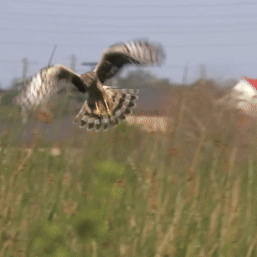
OK, harriers are cool, but do they have a relevance to New Jersey outside of being the logo of New jersey Audubon? Well...they do breed there...barely. But they've been observed doing so, so that counts. They represent key habitats in the state of New Jersey, so that's great. Their certainly charismatic enough (GRAY GHOST), and they've got nationwide conservation concern as an endangered species. So, it has those qualities going for it as the State Bird candidate. We'll see what the poll says. In the meantime, let's move on!
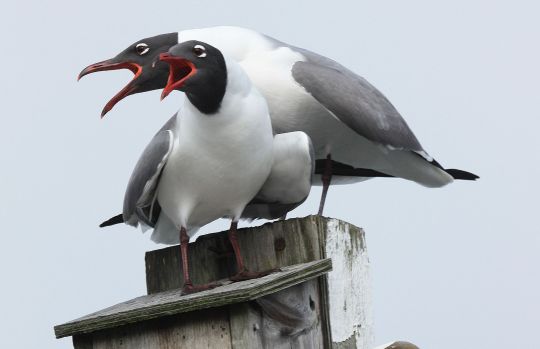
Laughing Gull (Leucophaeus atricilla)
Y'know, my original plan was to put the Ring-billed Gull (Larus delawarensis) in this list as well...and then, I stumbled upon a fun fact. The black-headed cousin of the Ring-billed Gull, and Laughing Gull, is a regular traveler to New Jersey, and in fact has a colony right off of the Jersey Shore, making them a fairly well-known and recognizable resident of an iconic area of the state. But pretty importantly, the species has a pretty massive breeding population in New Jersey. 5% of the breeding population of the species are in southern NJ, which isn’t the bulwark of their breeding population in the USA (that'd be Louisiana, according the eBird Status and Trends), but it's still a significant portion.
That said, the Laughing Gull is a recognizable member of the New Jersey shore community, and I mean the term "community" in multiple contexts. Ecologically, they're omnivorous scavengers that are well-adapted to living in a densely populated state, as well as in saltmarshes and other coastal environments throughout New Jersey. Sociologically, they hang around human settlements so much that they see opportunities in human hands...literally. The Laughing Gulls of the Jersey Shore are pretty notorious for stealing food out of the hands of beachgoers and boardwalk visitors. There are even boardwalk restaurants with signs saying they won't offer refunds if your food is stolen by a gull. They're SO notorious, in fact, that falconers have been hired to use their falcons to drive away these birds. And honestly...that's a shame. After all, the Laughing Gulls are such prominent citizens that humans have had to adjust to them.
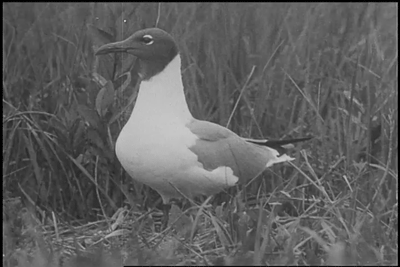
But that said...I'm gonna quote Brian Donahue, the reporter at the end of the video/new report I linked to above...because it's hilarious, and it makes an interesting statement that I think people from New Jersey should think about. Read the quote, but trust that I have a somewhat well-thought out idea supporting it.
Derided as "flying rats" by many, I think it's time to reconsider the Laughing Gull, because if things haters say about Laughing Gulls (they're loud, feisty, there's too many of them... (Interviewee Kathy McCarey): They're rude...they're very demanding...and they come for what they want...I don't like 'em.) ...are the same things haters often say about New Jerseyans. Laughing Gulls are us. They deserve more respect.
youtube
Look, as extremely funny as that point is...there's a point about that statement. That is something that people say about New Jerseyans! They live in a state full of garbage, they're obnoxious and loud, all of that kinds thing. And New Jerseyans love their state as much as anybody else; SO MUCH, in fact, that many people online say they actually love that stereotype, because it means that people STAY OUT OF THEIR STATE. Funny or not, true or not...there's a point there. Laughing Gulls, as with all gulls, have a bad reputation, which is mostly undeserved. They're opportunists trying to feed themselves and their young, who see a smorgasbord of food right in front of them, in their neighborhood! In their place, what would YOU do? Honestly, these guys are a solid contender for that reason alone.
Plus, honestly...it's kinda funny.
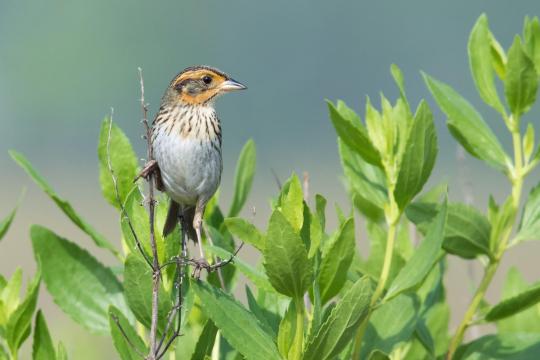
Saltmarsh Sparrow (Ammospiza caudacuta)
Finally, let's look at the conservation focus for this post: the Saltmarsh Sparrow (Ammospiza caudacuta). So, this is a pretty big one, especially when looking at New Jersey. A full 32% of the species' global population breeds in this state, which is, frankly, a MASSIVE proportion of any species. What's more, they're considered an endangered species, which immediately makes this an impressive contender for the State Bird of New Jersey. And as one of the most endangered species in the Eastern USA, not to mention a species of immense scientific interest for ecological and genomic reasons, this bird should get some attention by the public and federal government.
However...and this is a point to be made here...it's not exactly the most iconic bird for non-birders. As a birder who would kill to get this on his lifelist (I AM WORKING ON IT, LITERALLY TOMORROW AS I AM TYPING THIS), this is a prominent bird within certain communities. And to others? Ugh, this is gonna hurt me to say, you have no idea, but...it's a sparrow. It may be a little harder for people to become attached to a sparrow, and even more difficult for people to recognize the Saltmarsh Sparrow specifically.

Don't believe that this matters? Do me a favor, bird people. Show your non-bird friends Bird A, Bird B, and Bird C. Ask them how many different species you showed them. I'm willing to bet the especially observant will say 2. The less observant are gonna say 1. And throw in these top two pictures, while you're at it. I'm willing to bet you'll still get a 2 or 3. Because, unfortunately, to many people, sparrows all look pretty similar. And going forward, that's something we'll have to keep in mind: a unique appearance. What makes a bird iconic is also in its uniqueness and identifiability. And sure, maybe I'm not giving the average person enough credit, but we're also talking about children. I've said it before and I'll say it many times over: kids are important targets to consider when choosing natural State Symbols. And I really don't know how many adults could tell the difference between some sparrows, even professionals. And, uh...the Saltmarsh Sparrow is a very important example of this, because it wasn't even a species until the '90s.
Oh, and kudos to those of you who caught on immediately to my little trick up there. Probably a good amount of you noticed it, but if you didn't...there are five species of sparrows shown in this post. The two birds pictured in the post? Different species. Yeah, hearing that now makes that more obvious, but you may not have noticed it immediately. The first bird pictured is indeed the Saltmarsh Sparrow. The second bird, however, is the Nelson's Sparrow (Ammospiza nelsoni), which was once considered the same species as the Saltmarsh Sparrow. Dirty question, I know, but it's also found in New Jersey. Not a breeder there, but it's enough to cause a bit of confusion. See what I mean?
Oh, as for the rest, Bird A is LeConte's Sparrow (Ammospiza leconteii), Bird B is a Savannah Sparrow (Passerculus sandwichensis), and Bird C is a Grasshopper Sparrow (Ammodramus savannarum).
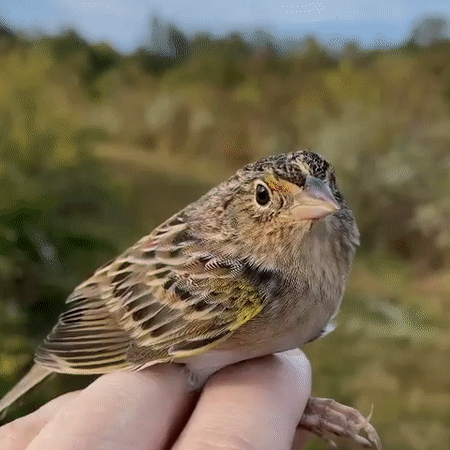
Please understand, bird-peeps: I hate making this argument. Genuinely. The New World sparrows are a wonderful group, and a really fun one to play around with and hunt down as a birder. And don't worry, sparrows will be getting a mention in my personal list. But as for the State Bird? I'll let you all decide.
And with that, that's the end of this post! I miss any big ones? Make any leaps a bit too big? Feel free to let me know! In the meantime, stay tuned for State #4 - Georgia! Wait...wait, the fourth state to be admitted into the Union was Georgia? Huh. Go figure.
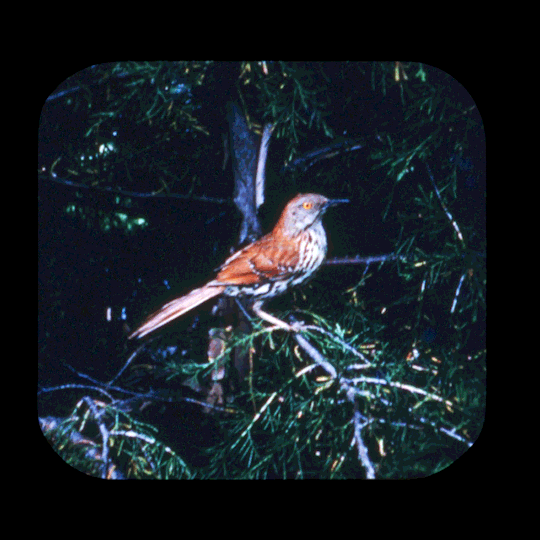
See you next time, and happy birding!
Introduction to the State Birds Initiative
1. Delaware - Poll | Results 2. Pennsylvania - Poll | Results 3. New Jersey - Poll | Results 4. Georgia - Poll | Results 5. Connecticut - Poll | Results 6. Massachusetts - Poll | Results
#birds#bird#state bird initiative#state birds initiative#birdwatching#bird watching#birding#birders#black birder#state bird#new jersey#birdblr#birblr#american goldfinch#eastern goldfinch#spinus tristis#saltmarsh sparrow#sparrow#golfdinch#ammospiza#laughing gull#gull#seagull#northern harrier#raptor#clapper rail#rail#rallus#cape may warbler#cape may
135 notes
·
View notes
Text
Goodness of the Day:
The butter melted perfectly on my toast today.
Everything was cancelled today because of the snowstorm. On the one hand, too bad - my parents were going to have a house showing today and my mom also had to call off the book club she hosts. But snow days are nice any which way. And we didn't have to do the mad final tidy session before the showing, so, nice and relaxed in that regard.
Helped Brother Two create a character for the Saltmarsh Christmas Special. Apparently he is an honest junior merchant working in luxury goods. A fantastical character indeed. ;-)
I'm going to sound like a broken record, but it was a thoroughly Blackberry day, and it was glorious. I'm reading very slowly, to imagine it the more clearly and savour the characterizations. "A Visit from the Murderess" especially blew me away. Though I didn't find myself in my most commenting frame of mind, that only means the comments are going to ferment. Into blackberry wine or something. Blocking the tag is allowed to avoid record scratches. You have been warned. (Also @isfjmel-phleg is the most lovely author for responding. That further exploration on Elystan and Amarantha getting a taste of each others' lives made my day.)
I did a lot of my reading in the conservatory, which sounds very Agatha Christie. Fact is we do have a room with an awfully high glass to wall ratio, and my dad's many, many plants live in there. So it's a conservatory. It was bright and pleasant in there, and I really need to do more of my reading in the armchair there. I always gravitate to the dining room, for some reason, even though it's not half as nice.
Someone said something that made me angry (in hindsight it was just me being touchy and proud,) but it made me power walk round and round and round the hallway-kitchen-dining room loop. After five minutes I realized I was in the wrong, but kept walking. After ten minutes I realized I just wanted to daydream about writing while I power-walked. Did this for about half an hour, and while I didn't get a writing idea, I'm glad it transformed from me being stupidly upset to something fun and benign, and that I didn't explode at anyone.
The shower has been re-finished, and it now has an enormous showerhead, and I am curious to try it.
People gave me some very cool book recs to try out! I am going to assemble my somewhat loosey-goosey 2025 TBR soon, and will certainly be incorporating some of them! We're going back to the reading challenge model. It works with my brain.
11 notes
·
View notes
Text








ANGIE LEWIN, Printmaker, b 1963 in Cheshire, England.
Angie Lewin studied BA (Hons) Fine Art Printmaking at Central St. Martins College of Art and Design between 1983 and 1986, followed by a year’s part-time postgraduate printmaking at Camberwell School of Arts and Crafts.
She says: "After working in London as an illustrator I studied horticulture and a move to Norfolk prompted a return to printmaking. Inspired by both the clifftops and saltmarshes of the North Norfolk coast and the Scottish Highlands, I depict these contrasting environments and their native flora in wood engraving, linocut, silkscreen, lithograph and collage. These landscapes are often glimpsed through intricately detailed plantforms. Attracted to the relationships between plant communities on an intimate level, even the fine lines of insect eggs on a flower bud are observed in my work. Still lives often incorporate seedpods, grasses, flints and dried seaweed collected on walking and sketching trips."
33 notes
·
View notes
Text

Sea Thrift is a native perennial plant of the UK, typically found growing in coastal rocky areas and saltmarshes. My little seaside scene featuring these flowers is available in my shop…
#Original Art#drawing#Pen And Ink#Colour Pencil#Mixed Media#Sketching#Mixed Media Drawing#Color Pencil#pen and ink#ink drawing#Line Drawing#ink#Ink Art#artwork#art#Traditional Art#Scottish Artist#Made In Scotland#Landscape#Landscape Painting#Wildflowers#Flowers#Ocean#Sea
7 notes
·
View notes
Text
October 11th, 2023


Attractive Running Crab Spider (Rhysodromus histrio)
Class: Arachnida
Distribution: North America, Europe, Turkey, Caucasus, Russia (from Europe to Far East), Central Asia and China.
Habitat: Occurs on plants, weeds and tall grasses, especially heather and sagebrush. More common on heathland, but can also be found on saltmarsh and other grasslands.
Diet: Active predator; feeds on invertebrates.
Description: There are two colour varieties of R. histrio, varying by habitat; the most common coloration is of a reddish-brown, providing ample camouflage against yellow grasses and brown stems of grasslands, though those found living on saltmarshes in Essex were found to be bluish-green, of a similar color to the sea purslane herb Atripex portulacoides found in the region. Their body is said to have a crab-like appearance due to the orientation of their first pair of legs, which are oriented sideways; for this reason, R. histrio is considered to be a false crab spider.
Adults usually occur in early summer, where females will enclose their egg sacs in silk and dried heather, and guard them until they hatch. They can also be found in late summer to early fall. Due to the steady disappearances of heathland to forestation and development, R. histrio populations have declined over the years, but are still considered secure.
(First picture by me, second by Steven Mlodinow)
29 notes
·
View notes
Text
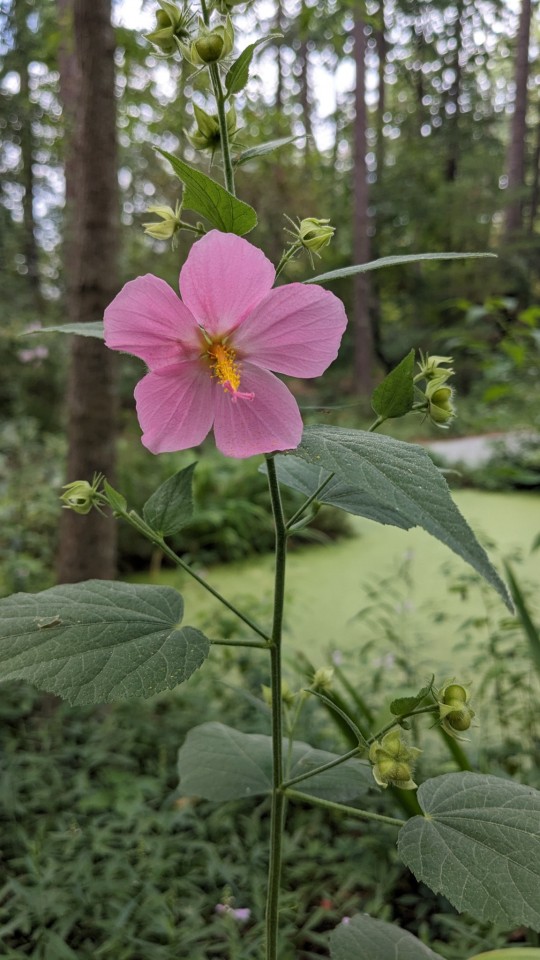
Kosteletzkya pentacarpos / Coastal Mallow at the Sarah P. Duke Gardens at Duke University in Durham, NC
#Kosteletzkya pentacarpos#Kosteletzkya#malvaceae#Coastal Mallow#Seashore mallow#Sweat weed#Virginia saltmarsh mallow#Saltmarsh mallow#Native plants#Native flowers#Flowers#Nature photography#photographers on tumblr#Sarah P. Duke Gardens#Duke Gardens#Duke University#Durham#Durham NC#north carolina
3 notes
·
View notes
Text
Hee Hee Hoo Hoo just wrote some fucked up letters for my DnD campaign



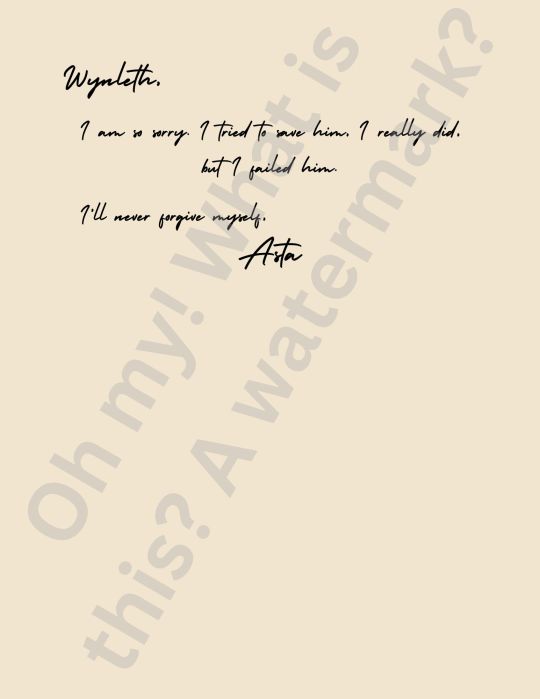
[TRANSCRIPTS BELOW BREAK]
Playing an interesting take on Saltmarsh my group is affectionately calling Pirates and Parolees. Everyone in the party is a criminal out on parole except for me, a First Mate on the vessel that was supposed to give them job experience and serve as a sort of training while out on parole. We finished our first two prologue sessions (we are easing a lot of new players into DnD so we tried to take it slow) and ended with the ship being attacked by Umberlee cultists (our Quartermaster was a plant!) our captain and 7 other crew members died.
Now I am stuck in Saltmarsh with 5 parolees who's crimes range from identity theft to serial killing, my best friend (the captain) is dead, and I can't leave the Parolees without permission from the government.
For those that are familiar with my Edge of Midnight or Baldur's Gate 3 writing, or have heard me talk about my PC Wynleth Reiden, you may recognize some names on these. Wynleth is serving as an NPC in this campaign and as the main governmental contact for the characters. Her husband Zan Caimaris (who is usually dead when he is mentioned) was alive and the Captain on The Eliza Lee. He died in the Cultist Attack (or did he? *wiggles brow in Wynleth's backstory requires him to come back very sick, we'll see if my brother sticks to that though*)
My current PC, Asta Galhearth, was best friends with Zan and one of few that knew about Wynleth and Zan's relationship. He tried to save Zan from his watery grave but a Kraken got in the way of that. A kraken also killed the crew members he tried to save and then some. He's feeling really responsible about it so he resigns from the company. We'll see where this goes lmao.
[Letter 1]
Symond Larke Pride of the Gate Mercantile Seatower, Lower City, Baldur’s Gate To whom it may concern, I regret to inform you that the Eliza Lee has been lost, her cargo along with it. We were attacked off the shores of Saltmarsh, a mere quarter mile from our destination. We lost many crew to the attack, their names are listed below. Kharvas Gav -Rigger Concrete - Rigger Andor Den - Rigger Amya Den - Rigger Beacon Xath - Healer Mel Hallow - Cook Lilyore Zasebar - Cook Zan Caimaris - Captain Attached are letters written to their kin. Please dispense to their families along with their final pay. I hope it brings them some closure. Please also take this as my formal resignation from the company. I have failed my crew, my captain, and the Eliza Lee. I am no longer fit to command a crew or a vessel. I ask that you dispense my final pay to my wife as I do not know if I shall return from this journey. I have also enclosed a letter for her. The Parolees under Zan and I’s care have survived. I have contacted the Authorities and am awaiting further instruction. it was an honor to serve, Asta Galhearth
[Letter 2]
My darling wife, The ship was attacked. Zan didn’t make it. The surviving crew is stranded in Saltmarsh. I don’t know when, or if, I will be able to return home, I have resigned from the company. You should have received this letter with my final pay. I wish it was more but I cannot bear to continue to call myself a sailor with the blood on my hands. I failed them. I failed Zan. I failed you. I hope you can forgive me. I will try to write soon with updates on my journey home. Despite my exit from the company, I am still responsible for the parolees under my charge. The road ahead seems long and arduous, I long for nothing more than to feel your embrace. Pray for me, it seems I have incurred the Bitch Queen’s wrath. I will hurry along as fast as I can. Yours eternally, Asta
[Letter 3]
Wynleth Reiden Ambassador of Baldur’s Gate The High Hall, Temple District, Upper City, Baldur’s Gate Madam Ambassador, I regret to inform you that the Eliza Lee has been lost. We have lost a substantial amount of our crew, including our captain, and all of our cargo. The company has been notified and the remaining crew allowed to make their way back to Baldur’s Gate however they see fit. I have chosen to resign from my position with the company but, in reviewing the documentation, cannot cede my responsibility of the parolees taken under Captain Caimaris and I’s charge. I am looking for further instruction. I was ordered to await something concerning the parolee’s when we arrived here in Saltmarsh. We have arrived, though through unforeseen circumstances. If you are aware of any solutions to our predicament, or any clauses that allow me to shed this responsibility into more capable hands, I would be much obliged. I am completely out of my depth here and, frankly, have been since we picked them up in Waterdeep. Anxiously awaiting your response, Asta Galhearth
[Letter 4]
Wynleth, I am so sorry. I tried to save him, I really did, but I failed him. I’ll never forgive myself, Asta
#dnd#dnd oc#dnd character#dnd props#forgotten realms#dnd 5e#dnd 5e character#dnd 5e homebrew#ghosts of saltmarsh
7 notes
·
View notes
Text
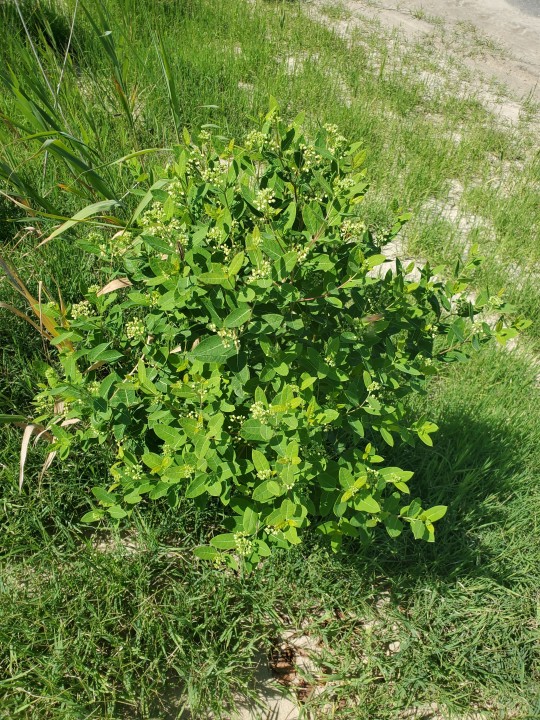
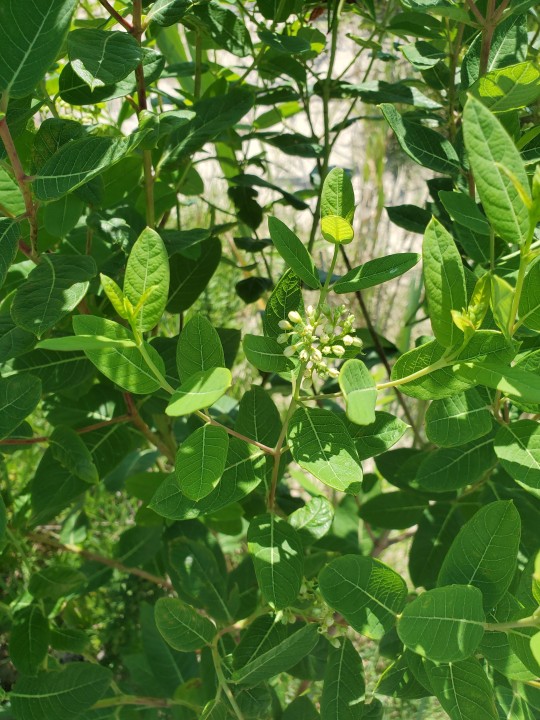
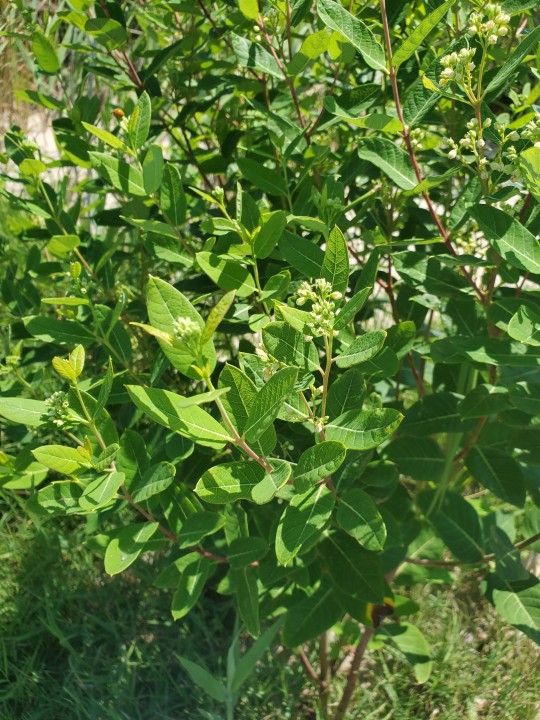

Hemp Dogbane (flowering & fruiting), Apocynum cannabinum
8 notes
·
View notes
Note
https://www.tumblr.com/lorwolf-salt/720611072598507520/post-post720596938019471360-2000-i-want-to?source=share
Simple. Flea market is your friend. Let me explain:
While yes low ID wolves and special IDs can net a lot, let's remove those from the equation. Instead, focus on any ww, token and food item you get from campaign. Road to 2k ms strat:
-sell all bones you get for 1 ms per 99 stack
-sell all cookable food on FM, use none cookable food to grind campaign
-sell all ugly ww for 3-5ms on FM
-sell all KNB on FM
-grind goldsea area 4 with 2 kits and companions that do the counter attack, sell the massive amount of doll trinkets you get to vendor. Then swap pebbles for ms
-out of food? Darkspine area 2. Lots of sellable and normal food. Icerun if you have the fishing event unlocked.
-ran out of farming seeds to sell veggies? Saltmarsh 4. Beat up those plants and get 1000 seeds of all plants. Sell extras.
Legit so many ways to get MS. So mamy people are buying things for a handful of ms here and there and it adds up super fast. Hell I don't even flip stuff but know the value there is already really good through a friend. Campaign is your friend my guy. Don't even have to move your cursor. Just click > refresh battle > click > refresh etc. Do some mining on the side, sell wheels and pickaxes for a ton of pebbles and you get your money in no time.
10 notes
·
View notes